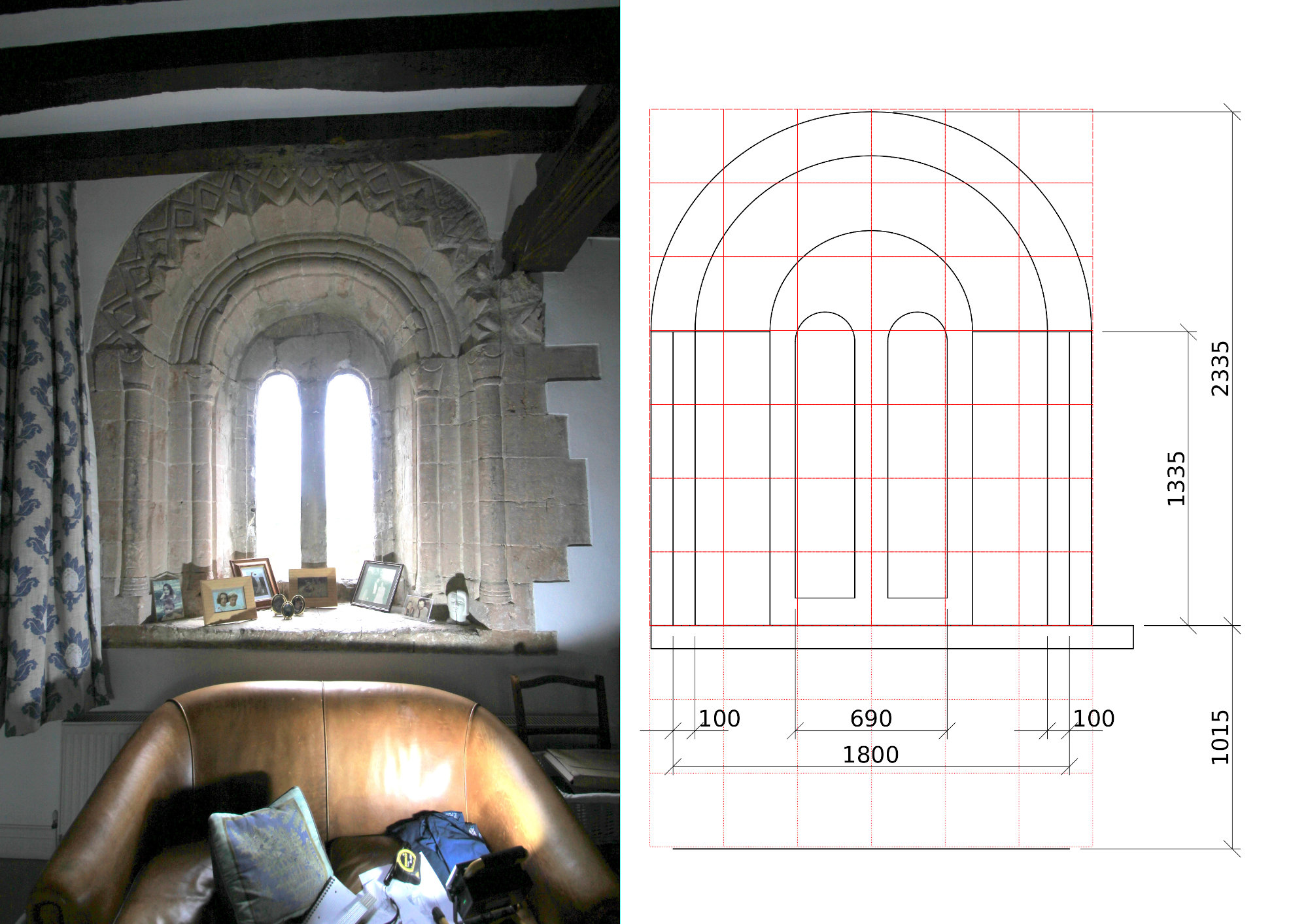Geometric analysis of vernacular buildings
This is ongoing research into the units of measurement used in the design of Somerset vernacular buildings. Its base is the accepted fact that changing wall thicknesses can identify different phases of construction. Here is the reason why wall thicknesses change.
Archaic measurements
Archaic measurements found in Somerset buildings, and an explanation why wall thicknesses change and can be used to identify
different phases of building construction
 Saltford manor is suggested as the oldest continually occupied house in England, dating mid C12. The building appears to be set out in Reeds
(11ft, 3352mm). The first floor is 1 Reed above the ground, the Norman window head is 1 Reed above the first floor. The window is gridded at Reed/10
(335mm). The dimensions shown are accurate site measurements. Click image to enlarge.
Saltford manor is suggested as the oldest continually occupied house in England, dating mid C12. The building appears to be set out in Reeds
(11ft, 3352mm). The first floor is 1 Reed above the ground, the Norman window head is 1 Reed above the first floor. The window is gridded at Reed/10
(335mm). The dimensions shown are accurate site measurements. Click image to enlarge.
This is the Masons Measurement we find in Somerset stone buildings.

Walters Farmhouse Tintinhull.
A dimensional analysis of
the house and some possible thoughts to consider after Ed Lorch's interesting talk.
East Lynch, Selworthey
This survey throws a bit of a curved ball and raises questions about where the Cob grid is derived from.